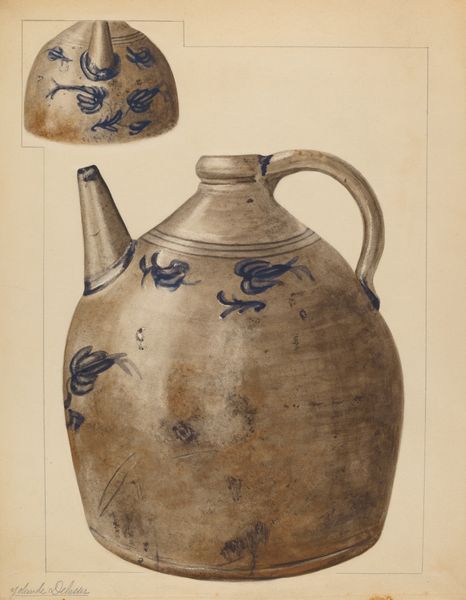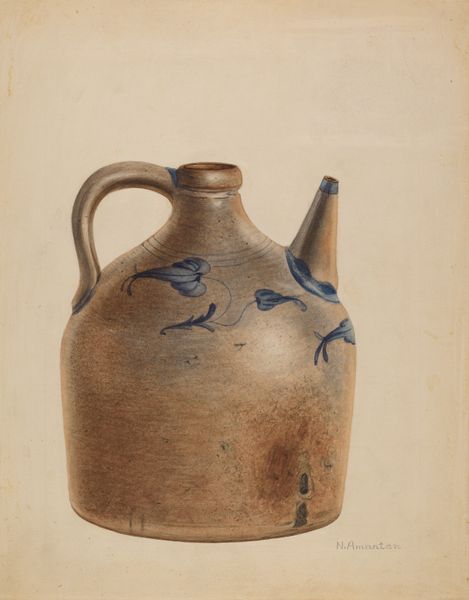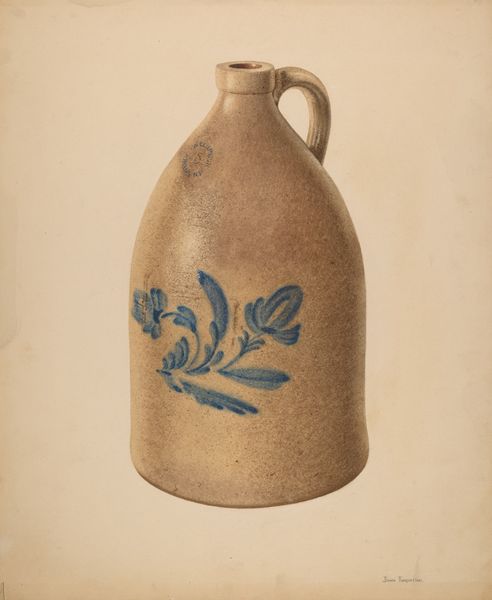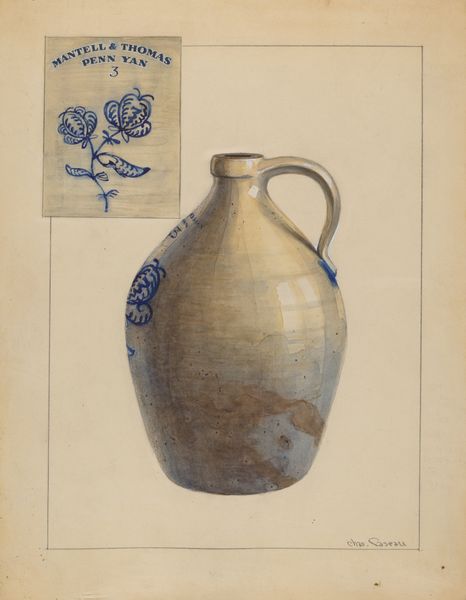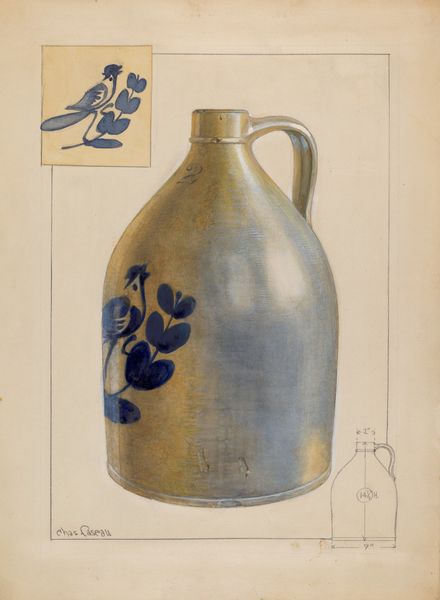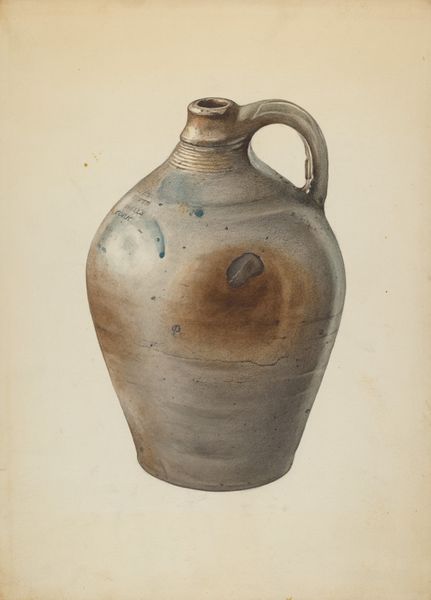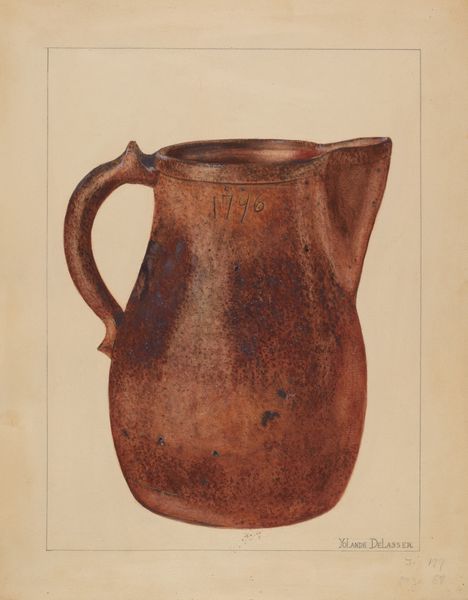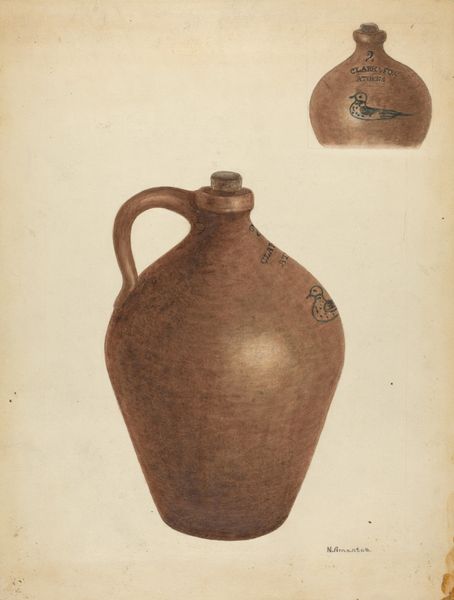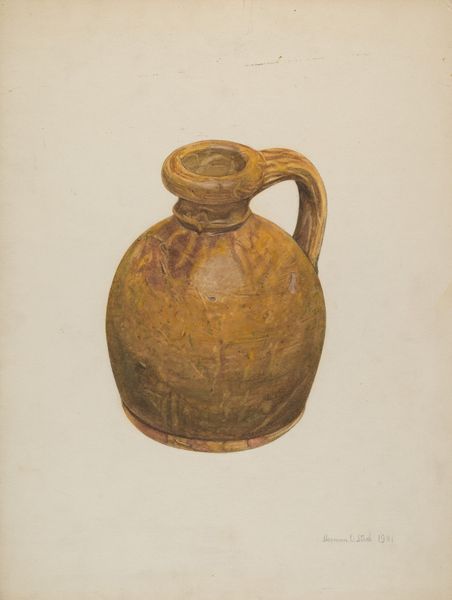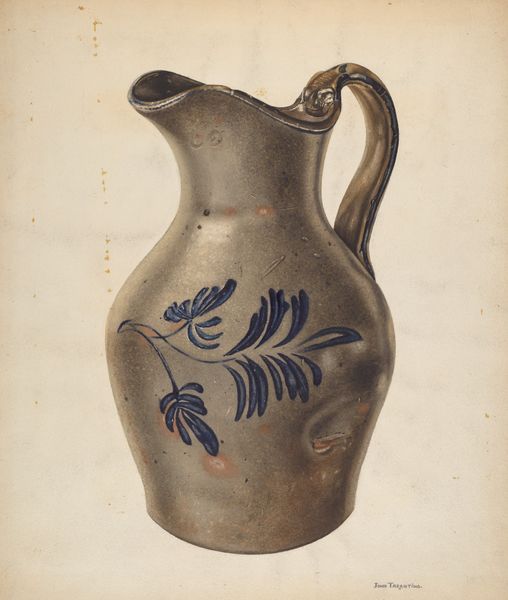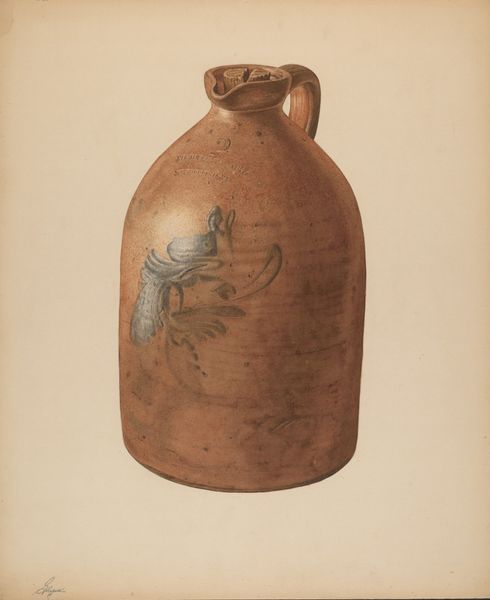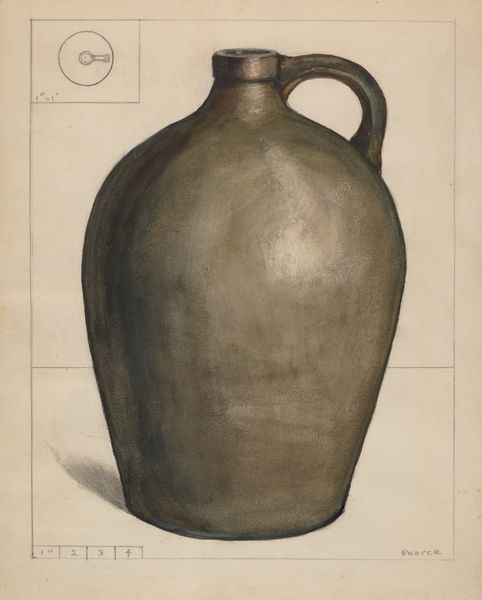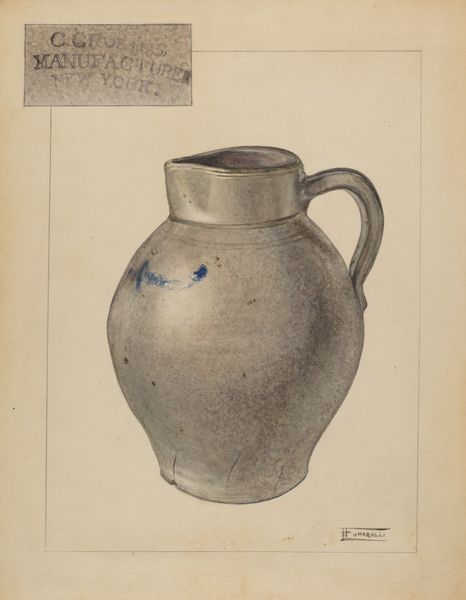
drawing, paper, watercolor
#
drawing
#
water colours
#
paper
#
watercolor
#
coloured pencil
#
realism
Dimensions: overall: 29.9 x 23.1 cm (11 3/4 x 9 1/8 in.) Original IAD Object: 11 1/2" High 9 1/2" Dia(waist) 2 1/2" Dia(neck)
Copyright: National Gallery of Art: CC0 1.0
Editor: Here we have "Jug," a watercolor and colored pencil drawing on paper by Jessica Price, created in 1936. The subject matter, an everyday object, makes it feel very familiar, almost nostalgic. I'm intrigued by the additional floral motif in the corner. How do you interpret this work within its historical context? Curator: That's a great observation! The "Jug", seemingly a humble still life, becomes particularly compelling when considered in the context of 1930s America. The style harkens back to earlier folk traditions but made during the Great Depression. Do you notice anything in the overall composition that hints at how this work might have been received at the time? Editor: Well, it does feel very grounded. Perhaps a connection to the simple life? Curator: Precisely. During the Depression, there was a resurgence of interest in American folk art and crafts as a way to reaffirm national identity and values. There’s a clear connection being drawn to rural, perhaps even idealized, ways of life. What is especially interesting is that Jessica Price, an educated woman and art school graduate, would be creating a piece like this in a period defined by economic hardship and, eventually, the looming shadow of war. Editor: So, it’s not just a jug; it’s a symbol loaded with cultural meaning? I hadn’t considered that the act of *choosing* this subject matter was so significant. Curator: Exactly! And think about how it's presented to us now, within the framework of a museum or gallery. This simple jug is elevated, becoming part of a dialogue about American history and identity. Editor: That’s a perspective shift I really needed. It changes everything to think about how these objects participate in culture and public memory. Curator: Indeed, understanding art means also understanding the complex web of social and institutional forces that shape its production and its enduring legacy.
Comments
No comments
Be the first to comment and join the conversation on the ultimate creative platform.
